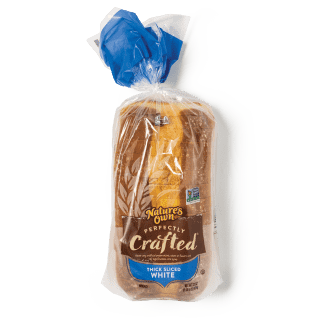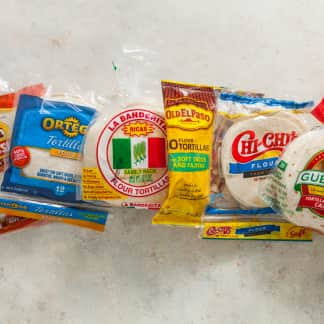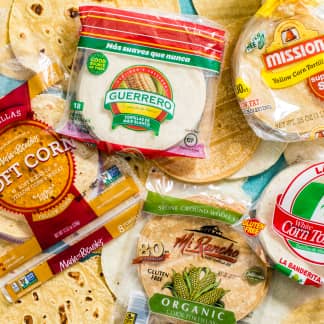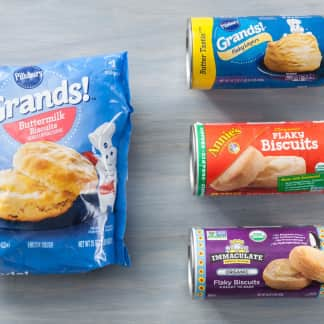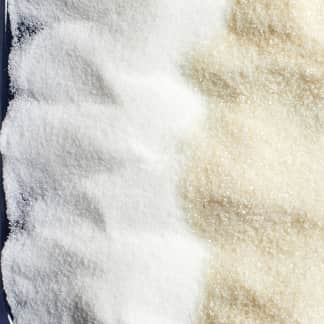Even homemade sourdough devotees and bakery aficionados would be remiss not to admit that supermarket sandwich bread serves an important role in the kitchen. Not only is it more affordable than a $10 bakery loaf and has a longer shelf life, but many people also prefer its soft, pliable texture for classic sandwiches such as turkey and cheese, peanut butter and jelly, grilled cheese, and more.
In the test kitchen, we like to use white sandwich bread for more than sandwiches. We reach for it when making French toast, stuffing, or fresh bread crumbs—and even to improve the texture of tomato soup. It’s also an important element on a plate of Texas barbecue, valued for its ability to soak up sauce or to fold around a sausage link for the perfect bite.


A white sandwich loaf is our go-to bread for easy French toast and for thickening creamy tomato soup.
Since we last tasted supermarket white bread, new products have emerged. Based on data of the top-selling brands nationwide from Circana, a Chicago-based market research firm, we selected eight products to taste in order to find the best version of this classic bread.
The Best Thing Since Sliced Bread
When people say something is “the best thing since sliced bread,” it’s because sliced bread really is a relatively new and groundbreaking invention. On July 6, 1928, the front page of the Chillicothe Constitution-Tribune of Chillicothe, Missouri, read, “Sliced Bread Is Made Here,” proudly announcing that the Chillicothe Baking Company would be the first in the world to sell machine-sliced bread. This development was thanks to the invention by Otto Rohwedder.
The necessity for machine-sliced bread was the result of a domino effect of sorts. In his book White Bread: A Social History of the Store-Bought Loaf (2012), Aaron Bobrow-Strain says that after the release of Upton Sinclair’s The Jungle (1906) and its exposé of Chicago’s meatpacking industry, concerns about the sanitary conditions of bakeries rose too. Among other changes, one hygienic solution was to start wrapping loaves of bread for transport. While this development succeeded in protecting loaves, it inhibited shoppers’ ability to see or smell their bread. “They needed a new way of judging freshness, and they found it in squeezable softness,” Bobrow-Strain says. In turn, commercial bakeries prioritized squishy loaves that were difficult to slice neatly at home and begged for the invention of a mechanical slicing machine. Another fun fact: For two months during World War II, sliced bread was banned to save resources that otherwise would have been used in mechanical slicers and bread wrapping. After much backlash, the ban was repealed.
Ingredients in Homemade Bread versus Commercial Bread
In small bakeries and at home, most basic breads are typically made with four ingredients: flour, water, salt, and yeast or sourdough starter. Sometimes, a little sugar, milk, eggs, and fat are added for enriched doughs such as sandwich bread or challah. If you look at a package of supermarket white bread, the ingredient list has quite a few additions.
Every bread we tried contained sweeteners, always in the form of sugar and sometimes as additional ingredients such as honey or stevia. Aside from one product, sugar was consistently the third most abundant ingredient after flour and water. This, of course, gives supermarket white bread its requisite sweetness.

The next most prominent ingredient was fat in the form of vegetable oil and sometimes butter, which provides the bread with a plusher texture and a bit of flavor.
Where supermarket bread really starts to differ from homemade bread is with dough conditioners and preservatives. Dough conditioners are a broad category of ingredients that include wheat gluten, sunflower or soy lecithin, citric acid, vinegar, enzymes, DATEM (diacetyl tartaric acid esters of mono- and diglycerides), monoglycerides, and more. While these ingredients are largely used to impact texture, create an even crumb, and keep the bread soft, the acidic ingredients can also give the bread a slight tang. Dough conditioners also help incorporate air into the dough, so the use of more dough conditioners may result in a lighter, more feathery texture.

All the breads we tried also contained preservatives to extend their shelf life. Some dough conditioners, such as citric acid and vinegar, double as preservatives. But some ingredients, like calcium propionate, serve solely as preservatives.

What Makes a Good Supermarket White Sandwich Bread?
Overall, tasters preferred products with a modest amount of sugar. Our winner had a bit more than 2 grams of sugar per 40-gram serving, whereas some of our lower-rated products had a little more than 1 gram and came off as “pretty bland.” Tasters also disliked products on the high end of the spectrum (more than 4 grams), and one taster called their sweetness overwhelming. Tasters liked products that contained a good amount of sodium. Our winner had 210 milligrams per 40-gram serving, compared to just 126 milligrams in our lowest-ranked product, which tasters called bland.

Some tasters were partial to breads that weren’t sliced too thick or too thin. Our winner was about ¹¹⁄₁₆ inch thick. Products that were closer to ¾ inch thick were too thick for most tasters, especially in sandwiches, while slices that were closer to ½ inch were too thin and insubstantial. But ultimately, it’s a matter of personal preference.

The textures of the loaves we tasted ranged from feathery and delicate to slightly dense and gummy. In general, our tasters enjoyed breads that were soft but still pleasantly chewy. We compared the ingredients of the breads, but we didn’t see any patterns of one particular additive being more successful than others. The loaves we tried were all fairly squishy and fluffy, despite likely having been baked weeks earlier—signs of the dough conditioners and preservatives at work.
Which Store-Bought White Bread Should I Buy?
Our winner is Sara Lee Artesano Bakery Bread. Tasters gave it high marks when eaten both plain and in simple chicken salad sandwiches. This product had a balanced sweetness and was subtly “yeasty.” It was “very plush” and “not too airy,” and it didn’t get gummy.

We found that differences between products were somewhat less obvious when eaten in a sandwich. The differences were even less pronounced when used in recipes with stronger, richer flavors such as a grilled cheese or simple stuffing. Bottom line: Nearly any bread will taste great in these applications. In the test kitchen, we’ll be reaching for our winner as a great all-purpose supermarket white sandwich bread.
- Taste plain
- Taste in chicken salad sandwiches
- Taste top- and bottom-ranked products in grilled cheese sandwiches
- Taste top- and bottom-ranked products in Simple Holiday Stuffing
- Samples were randomized and assigned three-digit codes to prevent bias
- Nutritional information is standardized for a 40-gram serving
- Moderate sweetness (between 2 and 3 grams of sugar per slice)
- ½- to ¾-inch-thick slices





